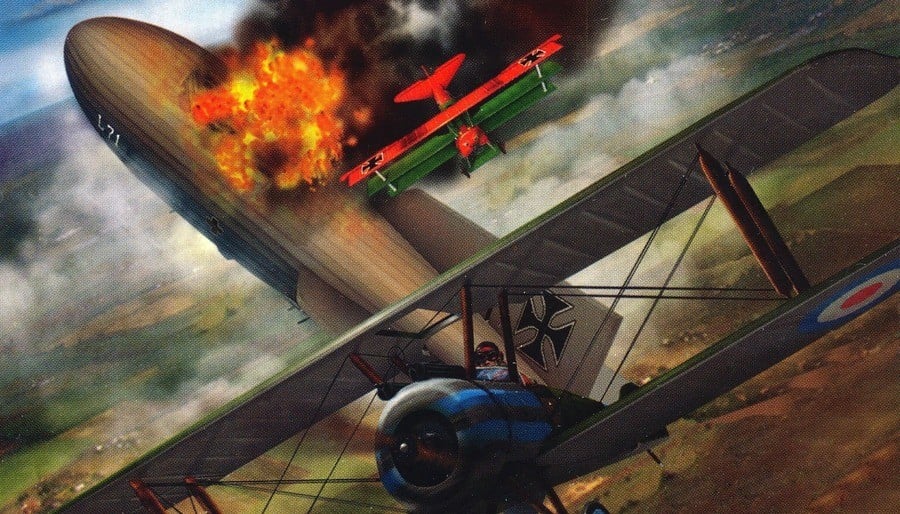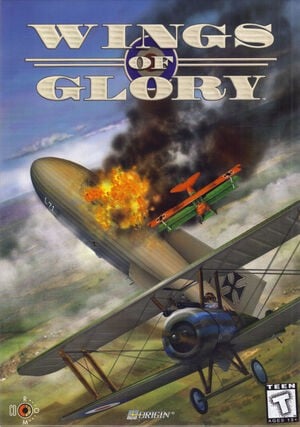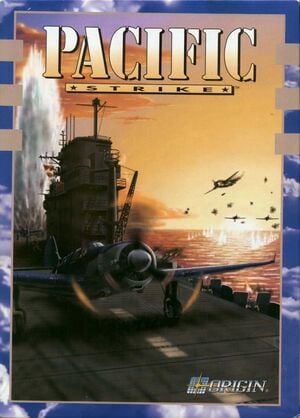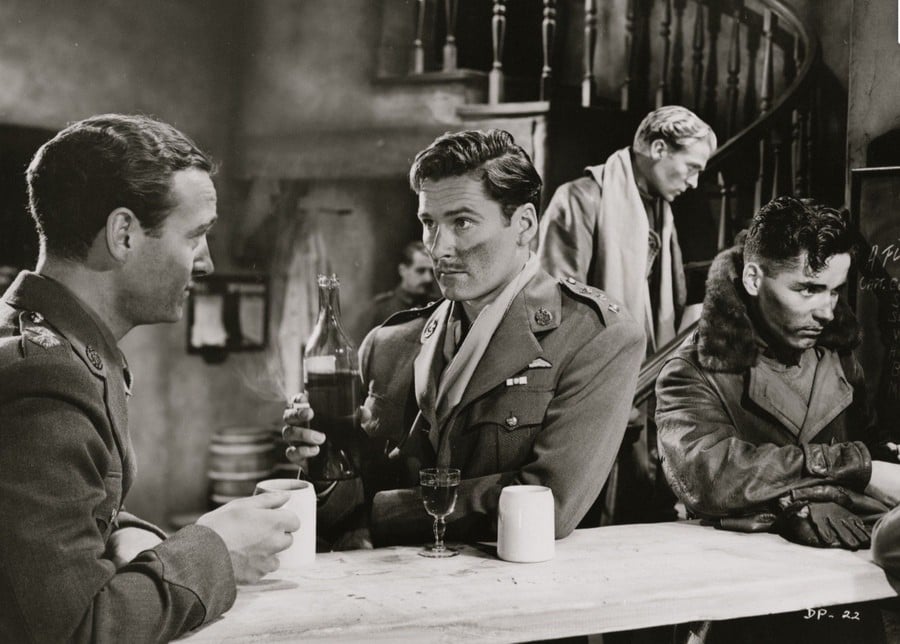
When it comes to combat-based flight sims, there has often been a tendency for video game developers to opt for a World War II setting over the First World War, and it's pretty easy to understand why.
Putting aside the obvious Hollywood influence (World War II films have typically been more popular than their World War I counterparts at the box office), the aircrafts flown in World War II were a significant improvement over their World War I predecessors, offering a greater level of speed, strength, and manoeuvrability. It makes total sense, therefore, that most developers would want to take advantage of that, as opposed to having players fly around in more primitive aircraft that would be significantly slower and a lot more difficult to control.
Of course, though, with every trend there are always outliers — people who want to challenge the status quo and try something different — and that also applies here too, with a small number of studios and publishers deciding to embrace the technology and setting of the First World War rather than blindly follow those who had come before them. Sierra On-Line and Dynamix are arguably the most famous of these, with their 1990 classic Red Baron often being hailed as the definitive World War I flight sim, but that isn't the title I want to discuss today. Instead, I want to take a closer look at another game that I feel is rarely mentioned today, Origin System's 1995 DOS title Wings of Glory, which recently celebrated its 30th anniversary earlier this year.

Set between 1917-1918, during the final years of the First World War, Wings of Glory had players step into the role of an inexperienced American pilot stationed on a British aerodrome, as he embarks on various aerial missions high above Europe alongside a colourful cast of characters. Players would get to explore the base, occasionally pointing and clicking their way through story cutscenes with their fellow officers and local villagers, before heading to the skies in their their planes to destroy enemy aircraft and convoys, or take part in challenging escort missions or bombing campaigns.
Originally conceived by Warren Spector, the co-creator of System Shock and Deux Ex, it was critically acclaimed upon release, earning rave reviews from various computer games magazines at the time, but has since faded into obscurity, likely overshadowed by what its creator did next. Because of this, I wanted to take the time to look back at the making of this curious title, to uncover more about the game's origins, the team that was assembled to build it, and what they feel looking back on it today. So I reached out to Spector, as well as two other former Origin employees — Bill Baldwin, and Whitney Ayres — to see what they could remember about the subject.
As Spector tells me, the story of Wings of Glory's development begins sometime in early 1993, and opens in a fairly appropriate surroundings given the game's subject matter — an airplane tens of thousands of feet in the air. At the time, Spector and another employee at Origin Systems, Chris Roberts (the creator of Wing Commander), were travelling aboard a commercial flight on the way to visit EA San Mateo, when the pair began discussing Roberts' latest title, leading to a conversation that would eventually birth the idea for a World War I game.
Spector recalls, "Chris was working on Strike Commander at the time — a jet aircraft combat game. He had these beautiful 3D-modeled planes, this cool 3D-modeled cockpit, radar, and long-range missiles — all of which were really cool. But I asked him why he went to all the trouble of doing those things, all of which ensured players would never get close enough to see the enemy planes. So I asked him why he hadn't done a WWI combat sim, where you had none of those things and had no choice but to look around in a 3D cockpit to find and track enemies. He replied, 'Why don't you do it?' and I said 'Huh.'"
According to Spector, he didn't need a lot of convincing to take Roberts' up on this suggestion. Ever since he was a kid, he had always been "a plane junkie", thanks to discovering a copy of Air Progress Magazine at the age of 3. He also had a ton of WWI reference books resting on his shelf at home and was excited at the prospect to finally put them to good use.
I always thought the primitive nature of WWI aircraft would make for a more interesting experience given the tech we had. Also, there were far fewer WWI sims out there at the time (and even today).
"Making some sort of flight sim always had a strong appeal for me," he tells me. "And I always thought the primitive nature of WWI aircraft would make for a more interesting experience given the tech we had. Also, there were far fewer WWI sims out there at the time (and even today). There was also, I thought, more variety in the types of planes and the way they flew back then. I mean, rotary and inline engines... monoplanes, biplanes, triplanes, and zeppelins! Who doesn't want to shoot down zeppelins?"
Inevitably, when Spector returned to Origin's offices in Austin, Texas, following this trip, he immediately started trying to get the project off the ground, talking with the VP of Origin product development, Dallas Snell, and the sales and marketing division inside the company to get the go ahead. What they ended up agreeing on was that Spector would serve as the game's producer, and this new title be a smaller project with a leaner development schedule built inside Strike Commander's "RealSpace" engine.
This would allow the team take advantage of Strike Commander's various technological advancements, such as its sophisticated flight models, its detailed terrain and environmental features, as well as the 'Virtual Cockpit' (a feature which let players look around the flight cabin independently of where they were steering), without having to build out an entirely new engine. This, Spector believed, would help the project stand out from some of the other World War I games on the market like Red Baron and MicroProse's Knights of the Sky.
"We looked at other games, of course, but I thought that Chris's 3D model tech would give us an advantage," Spector tells me. "Plus, I was probably being arrogant but I believed we could do better on the flight model side of things and make our planes behave more like the real thing. We also planned fully-textured, rolling terrain and fluffy clouds that would set us apart. At the end of the day, we got the fully textured part. But the rolling ground and fluffy clouds slowed the game to a crawl and had to go."
To help him realise this goal, one of the first people that Spector ended up recruiting for this dream project was Bill Baldwin, who would assume the role as the game's project lead. Baldwin had never led a project before and had also never worked with Spector prior, but was approached in this instance as he had a pretty good handle on what the RealSpace engine could do. On Strike Commander, he had previously had his fingers in various aspects of that game's production, contributing to the RealSpace engine's Terrain Editor, the game's cutscenes, its audio system, the cockpit, HUD, and multi-function displays, and its library code. This made him something of a perfect candidate to take the lead on Wing of Glory's development.
Baldwin remembers, "I was just off Strike Commander and when I was there, Origin would usually invest big in a flagship game with new technology, and then make spinoffs using the same engine, but with smaller teams and budgets. For example - Martian Dreams and Savage Empire both spun off from Ultima VI, and Wing Commander 2 and Privateer from Wing Commander. After the big development effort on Strike Commander, it made sense to make some games with that engine that were more content-focused and ideally could be done with smaller teams and shorter timelines.
He continues, "Of course Red Baron was a big inspiration, but so were WWII and later era sims like Chuck Yeager’s Air Combat, Aces of the Pacific, Their Finest Hour, Secret Weapons of the Luftwaffe, and I'm sure many others that I'm forgetting. Walking around the office late in the day, there was a good chance you'd see people playing one of these games. Given those business circumstances, and the general enthusiasm for the genre, it was an obvious choice to bring Origin’s cinematic story-driven approach to historical flight sims built on the Strike Commander engine, and Wings of Glory and Pacific Strike were the results."

After managing to convince Baldwin to come onboard the project, Spector continued assembling a team for the new World War I, which ended up being comprised of an eclectic group of people from across the studio. Among them, for instance, was a small number of veteran developers who had previously collaborated with Spector on Ultima VII and its various add-ons (such as the designer Bruce Adam, the programmer Tony Bratton, and the artist Terry Manderfield), as well as others from elsewhere in the company, including a bunch of new hires who had never worked on a video game before.
"Some of the members of the team came from my group and had worked on [my] other projects," Spector recalls, "But most of them were new to me. I'm not sure they started out close, but folks came together as time went on."
Baldwin, meanwhile, states, "I hadn't worked with many of them before, but I later went on to work with several of the team members for many years after on other projects and at other companies, including John Talley, Tony Bratton, and Whitney Ayres"
According to Whitney Ayres, who would take on the role of art director on the World War I title, one of the ways Spector tried to bring this group of people together was through a "team movie day" early in development at his house, where the producer ended up showing several films based on World War I like The Blue Max and The Dawn Patrol (1938).
These films helped the team to get on the same page creatively, and also served as an important influence on the game's story, which was written by Lisa Smith, and the character Charles Dearing, who is based on the pilot David Niven played in The Dawn Patrol. This wasn't the only reference the team used either, with the official BradyGames player manual featuring lists of biographies, magazines, and memoirs the group used while researching the period. The key was to be as "historically accurate as possible", with the planes representing a particularly interesting challenge for the artists. In the game, players start off flying the Sopwith Pup, with the later aircraft including everything from S.E.5s to SPADs, Camels, and a captured German Fokker Dr.I.

"I wanted to lend as much character as possible to the aircraft," Ayres remembers. "The outlandish paint jobs on WWI German planes were the obvious choice to replicate to achieve this, but we also found giving the cockpits a beaten, “worn-in” feel went a long way in this regard. It also helped set the title apart from Red Baron’s polygonal fighters.
He continues, "At the time, it was tough to find reference for the planes and cockpits. This was before the internet had the astronomical amount of content it has today, so I had to scour the local hobby shops for models and specification manuals. I built the Fokker Dr. I, DVII (my favorite plane!) and Spad XIII aircraft from model kits before constructing them for the game. This gave me a pretty good understanding of the fuselage volumes and what details to include. The aerodrome sets were also based on old photos of actual locations. We had to cut corners dues to render times and memory footprint, but strove to capture the essence of these somewhat ramshackle structures."
In total, it's believed that the development of Wings of Glory took 8 months from tip to tail, though the game somehow didn't end up launching on CD-ROM until the Spring of 1995, with reviews for the title starting to appear in April of that year. On the whole, these reviews were significantly more gleaming than those that had faced the other RealSpace engine spin-off Pacific Strike one year earlier, with Wings of Glory seemingly escaping the many pitfalls that game had run into with its performance and lacklustre design.
In his review, Computer Games Strategy Plus's Steven Wartofsky, for example, described Wings of Glory as "better than Red Baron" and called it a game "that deserves superlatives", praising the "solid" graphics, its flight model, and its ability to produce "truly memorable experiences". Meanwhile, Electronic Entertainment's Al Giovetti called it a "must" for fans of flight sim fans, referring to as the plot "well-written" and suggesting that "Even the low-resolution VGA graphics are unusually attractive and show off the extraordinary talent of Origin's artists".
It seemed that almost everyone who touched the game came away impressed, but this apparently had little impact on the sales, with Spector telling us the game didn't do particularly well sales-wise when it came to its release. Speaking to me about the game's failure to leave a lasting mark, Baldwin speculated this could have something to do with the evolving PC market, which was begin to favour real-time strategy titles and first-person shooters.
That was a really fun time to be making games before development teams and budgets ballooned and publishers became more risk-averse. You could still do something with a more niche appeal and a small team that could sell enough to be financially viable...
"Historical flight sims were probably already a shrinking market at the time," Baldwin says. "But the genre was becoming even more niche, with big RTS and FPS titles starting to dominate the market, and MMOs soon to follow. So, despite the good reviews, I'm not sure Wings of Glory made much of a mark on PC gaming."
Nevertheless, he's still proud of what the team achieved on the project. "I'm happy that anyone still takes an interest in it," Baldwin says. "There are YouTube videos of gameplay, and occasionally someone sends me a Reddit thread with people talking about how much they loved the game, which is cool. That was a really fun time to be making games before development teams and budgets ballooned and publishers became more risk-averse. You could still do something with a more niche appeal and a small team that could sell enough to be financially viable."
The same also goes for Spector. "Today, I'm inordinately proud of the game," the producer says. "It had its flaws — what game doesn't? — but the team killed it. We made a WWI combat flight sim unlike anything anyone had made before. I think it's still unique today. I wish more people knew about it. Frankly, it fits right in with all the other games I've worked on — story... immersion... unique player experiences based on player choices... It's all there. Just no one sees it, more's the pity.
"I'll tell you one funny story, though", he adds. "There was a software store called Software Etc. back then and the buyer came by to check out our stuff. Well, we had a special surprise waiting for him. We set up a ThunderSeat (which would rumble in response to stuff going on in the game). We put a joystick between his legs and a scarf around his neck. Then we plopped a VR headset on him (Did I mention we supported all the VR headsets available back then?). Anyway, we had him start taxiing for takeoff, bouncing around on the grass runway, thanks to the seat. And then the magic happened. After he had the headset on and couldn't see anything but the game we turned on a box fan blowing at him. You can imagine the level of immersion he experienced! That made the whole project worthwhile."
Sadly, if you want to try Wings of Glory today, there's currently no way to easily purchase the game and get it to run on modern PCs, with the title being unavailable too buy on digital storefronts like Steam and GOG. Given the game is relatively obscure, I don't foresee this changing anytime soon, but would be happy to be proven wrong, as I still believe it as a fascinating title and one that still has something to offer to World War I buffs and flight sim enthusiasts.
